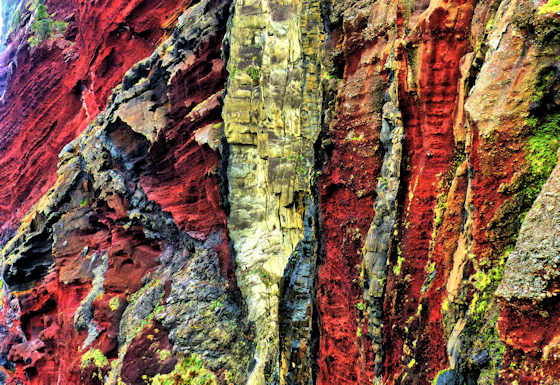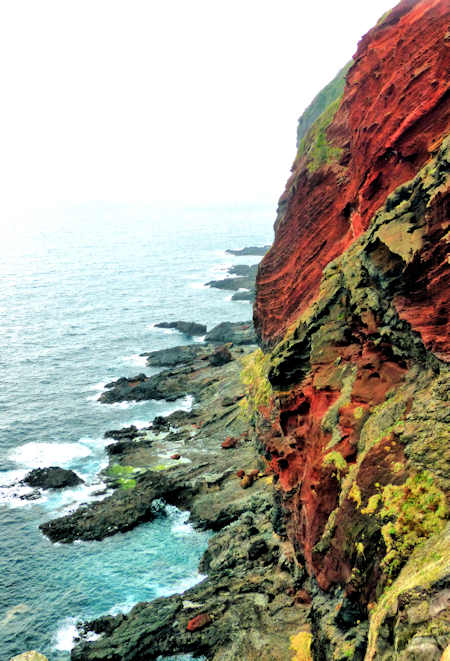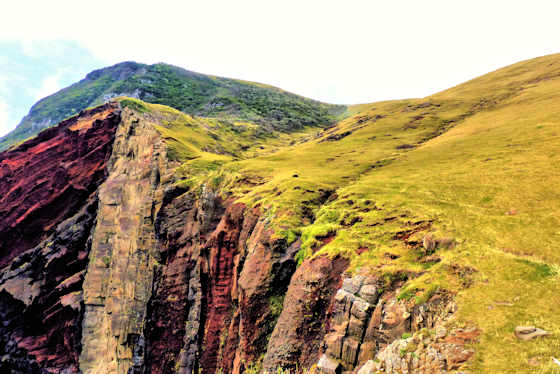Red Cliff Sekiheki
Sekiheki is a large, colourful cliff almost 1k long on the south coast of Chiburi Island, Chiburijima.
Chiburijima is the southernmost, smallest, and least-popu lated of the 4 inhabited islands of the group of islands known as Oki off the coast of Shomane.
The Oki Islands are part of the Daisen-Oki National Park, and since 2013 have also been a UNESCO Global Geopark.
Geoparks tend to focus on the geology of a place and also tend to have a lot of signage and information boards explaining what you can see.
Sekiheki is a great spot to see the result of various volcanic activities 6 million years ago. The Oki islands themselves are a sunken caldera.
The sections of cliff that are red were formed from magma with a high concentration of iron-oxide.
The Oki Islands are one of my favorite three
places in Japan and other posts from them can be found by clicking this link.





























